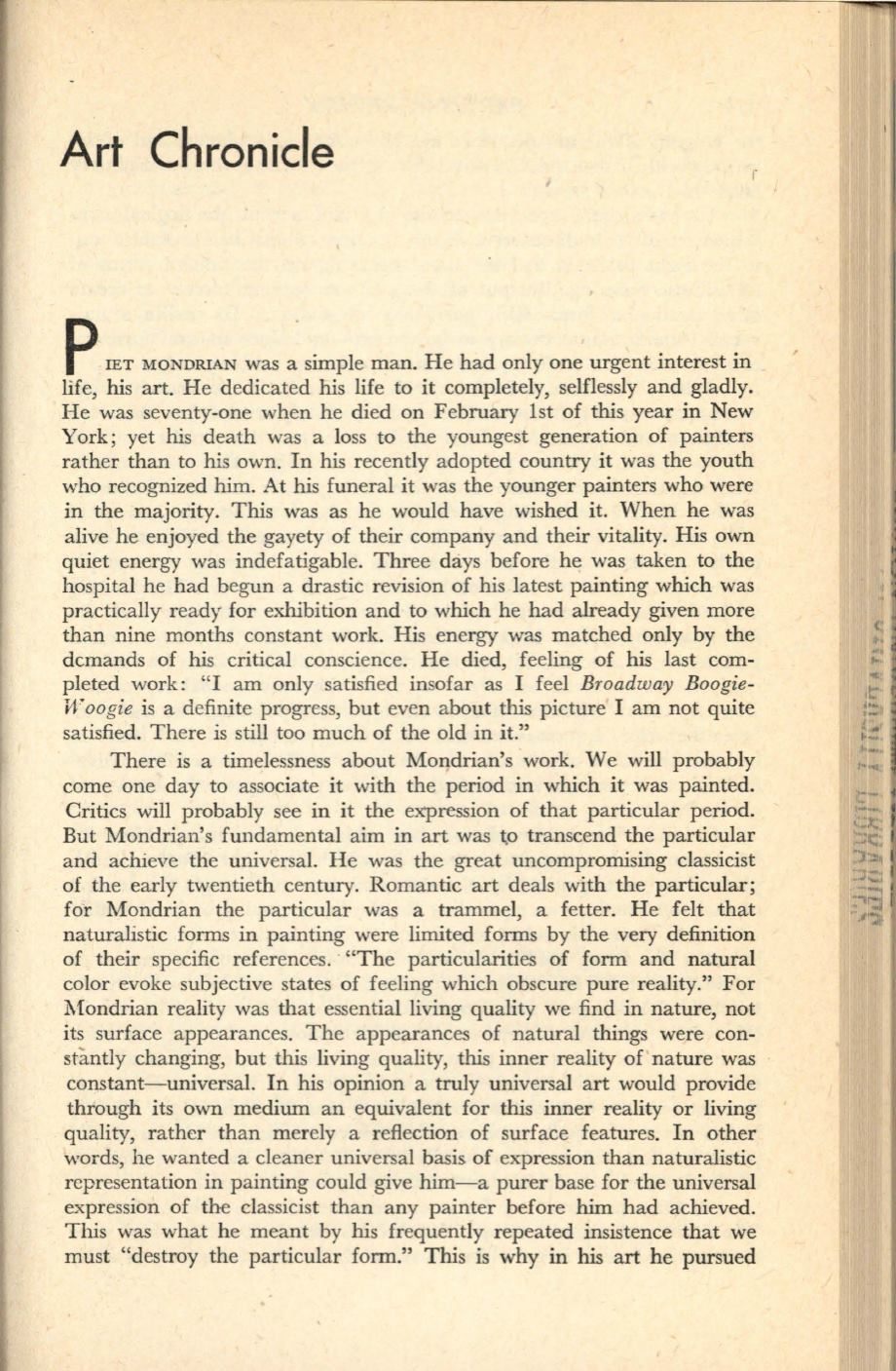
Art Chronicle
P
JET MONDRIAN
was
~
simple man. He had only one urgent interest in
life, his art. He dedicated his life to it completely, selflessly and gladly.
He was seventy-one when he died on February 1st of this year in New
York; yet his death was a loss to the youngest generation of painters
rather than to his own. In his recently adopted country it was the youth
who recognized
him.
At his funeral it was the younger painters who were
in the majority. This was as he would have wished it. When he was
alive he enjoyed the gayety of their company and their vitality. His own
quiet energy was indefatigable. Three days before he was taken to the
hospital he had begun a drastic revision of his latest painting which was
practically ready for exhibition and to which he had already given more
than nine months constant work. His energy was matched only by the
demands of his critical conscience. He died, feeling of his last com–
pleted work: "I am only satisfied insofar as I feel
Broadway Boogie–
Woogie
is a definite progress, but even about this picture I am not quite
satisfied. There is still too much of the old in it."
There is a timelessness about Mondrian's work. We will probably
come one day to associate it with the period in which it was painted.
Critics will probably see in it the expression of that particular period.
But Mondrian's fw1damental aim in art was t.o transcend the particular
and achieve the universal. He was the great uncompromising classicist
of the early twentieth century. Romantic art deals with the particular;
for Mondrian the particular was a trammel, a fetter. He felt that
naturalistic forms in painting were limited forms by the very definition
of their specific references. · "The particularities of form and natural
color evoke subjective states of feeling which obscure pure reality." For
l\fondrian reality was that essential living quality we find
in
nature, not
its surface appearances. The appearances of natural things were con–
st'imtly changing, but this living quality, this inner reality of nature was
constant-universal. In his opinion a truly universal art would provide
through its own medium an equivalent for this inner reality or living
quality, rather than merely a reflection of surface features. In other
words, he wanted a cleaner universal basis of expression than naturalistic
representation in painting could give him-a purer base for the universal
expression of the classicist than any painter before him had achieved.
Tlus was what he meant by his frequently repeated insistence that we
must "destroy the particular form." This is why in his art he pursued


